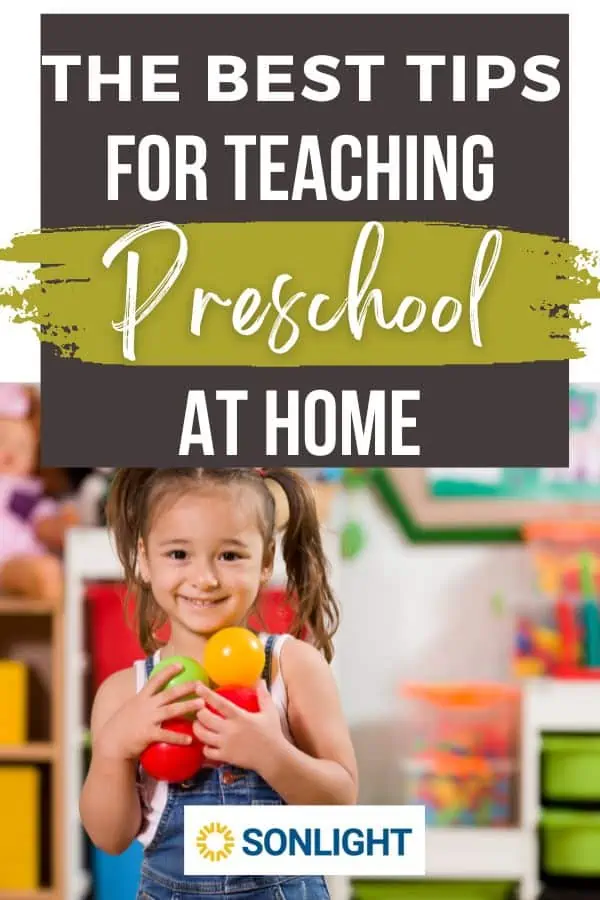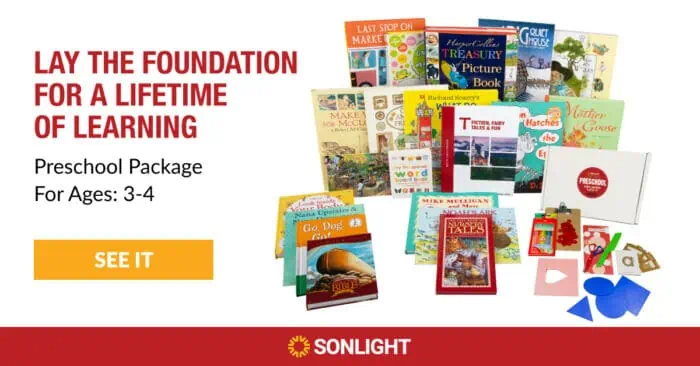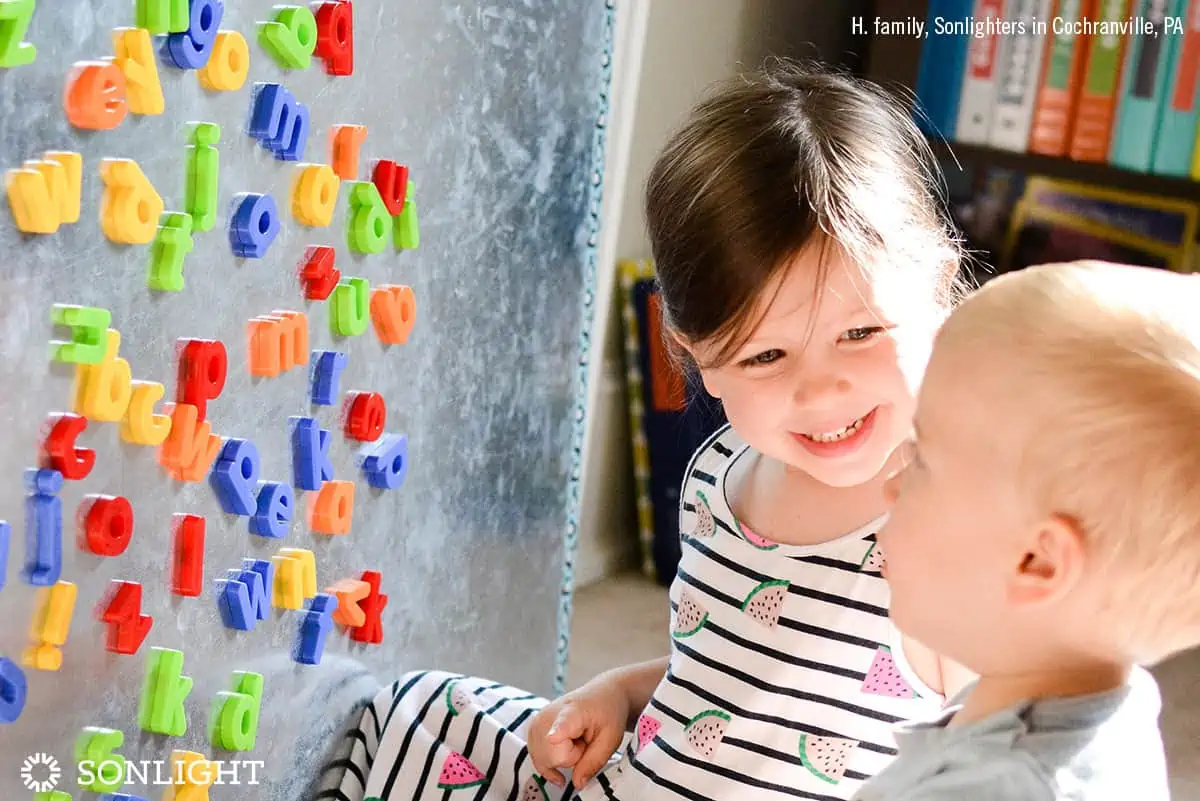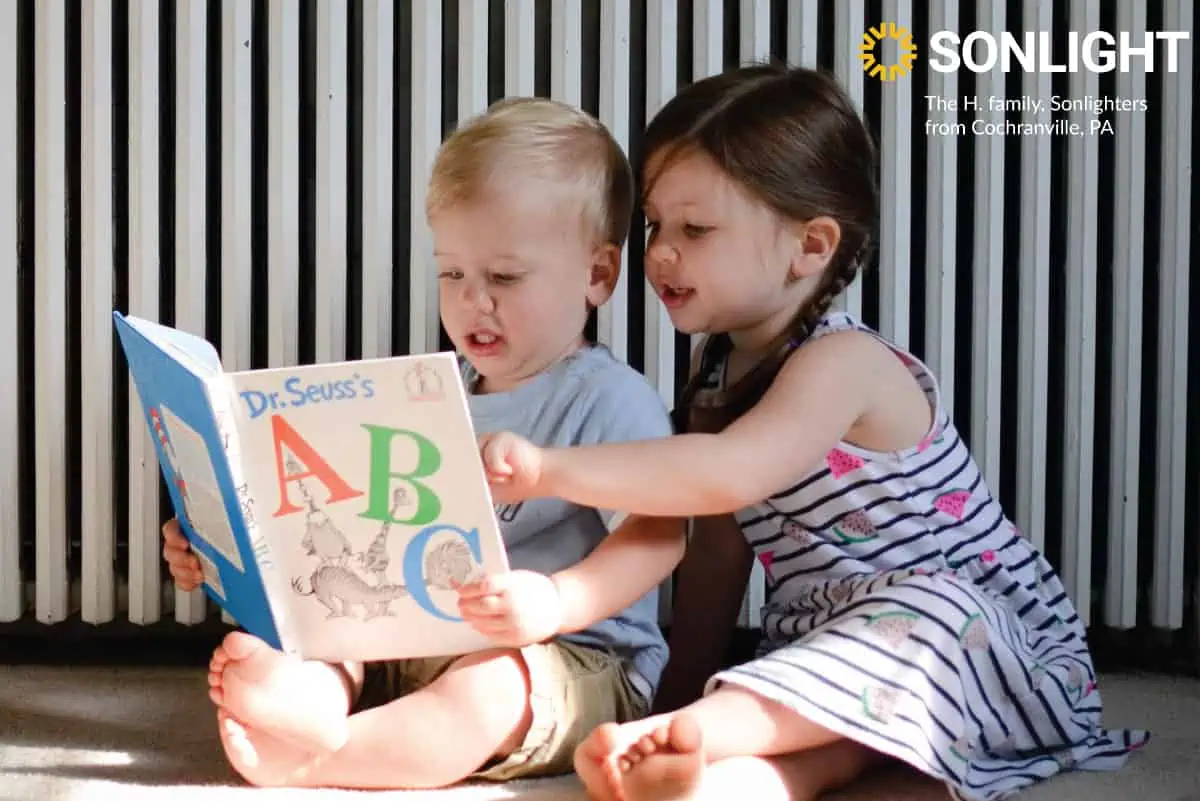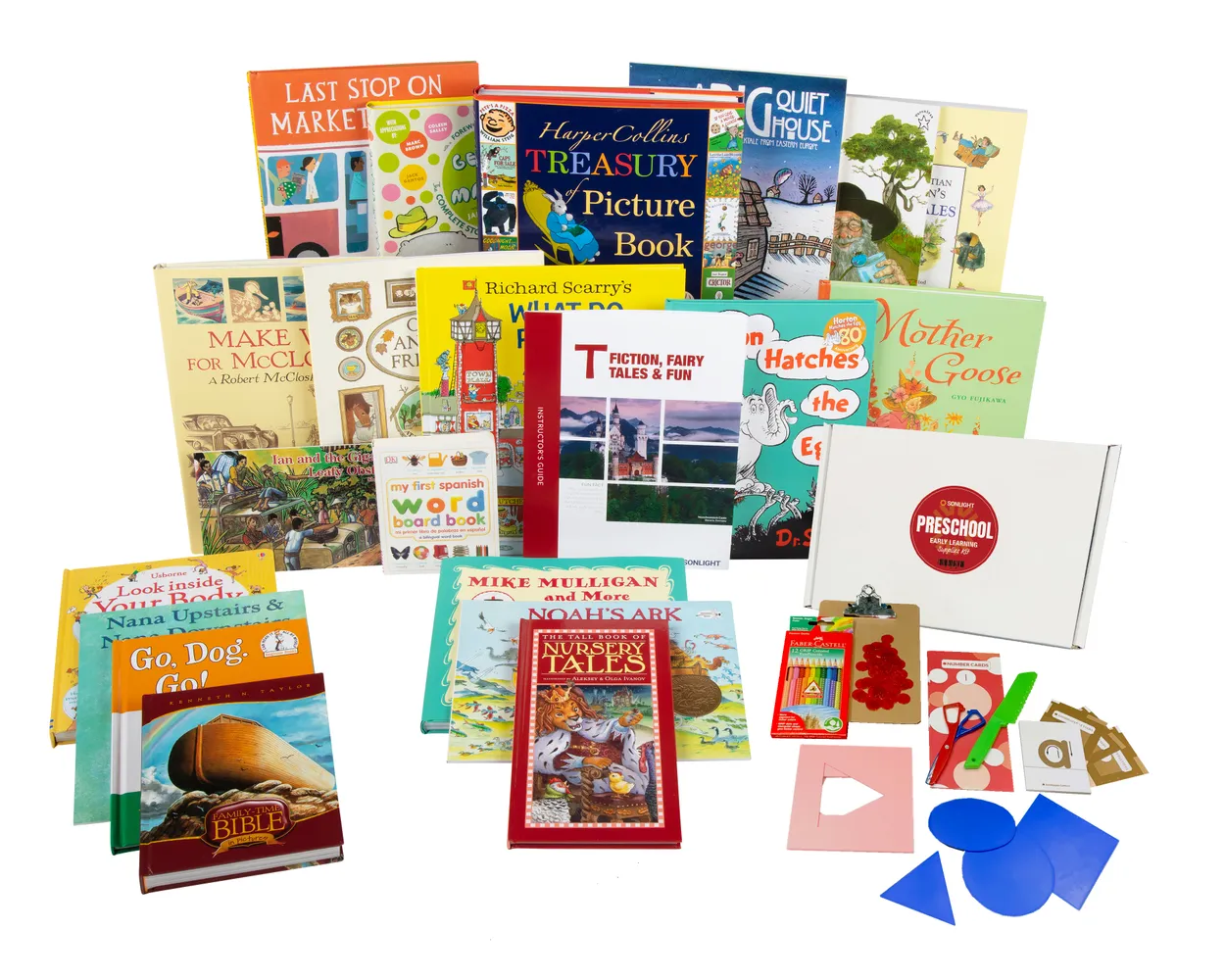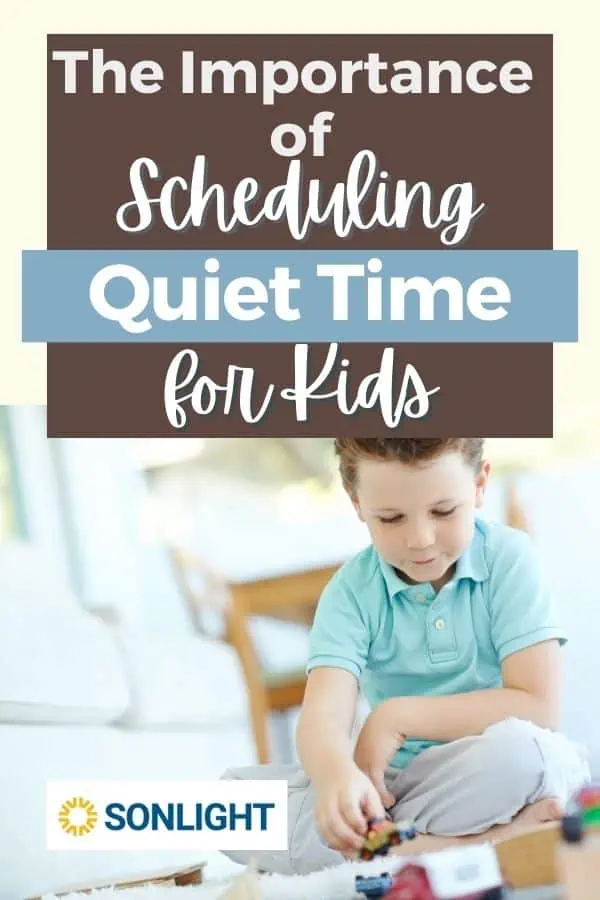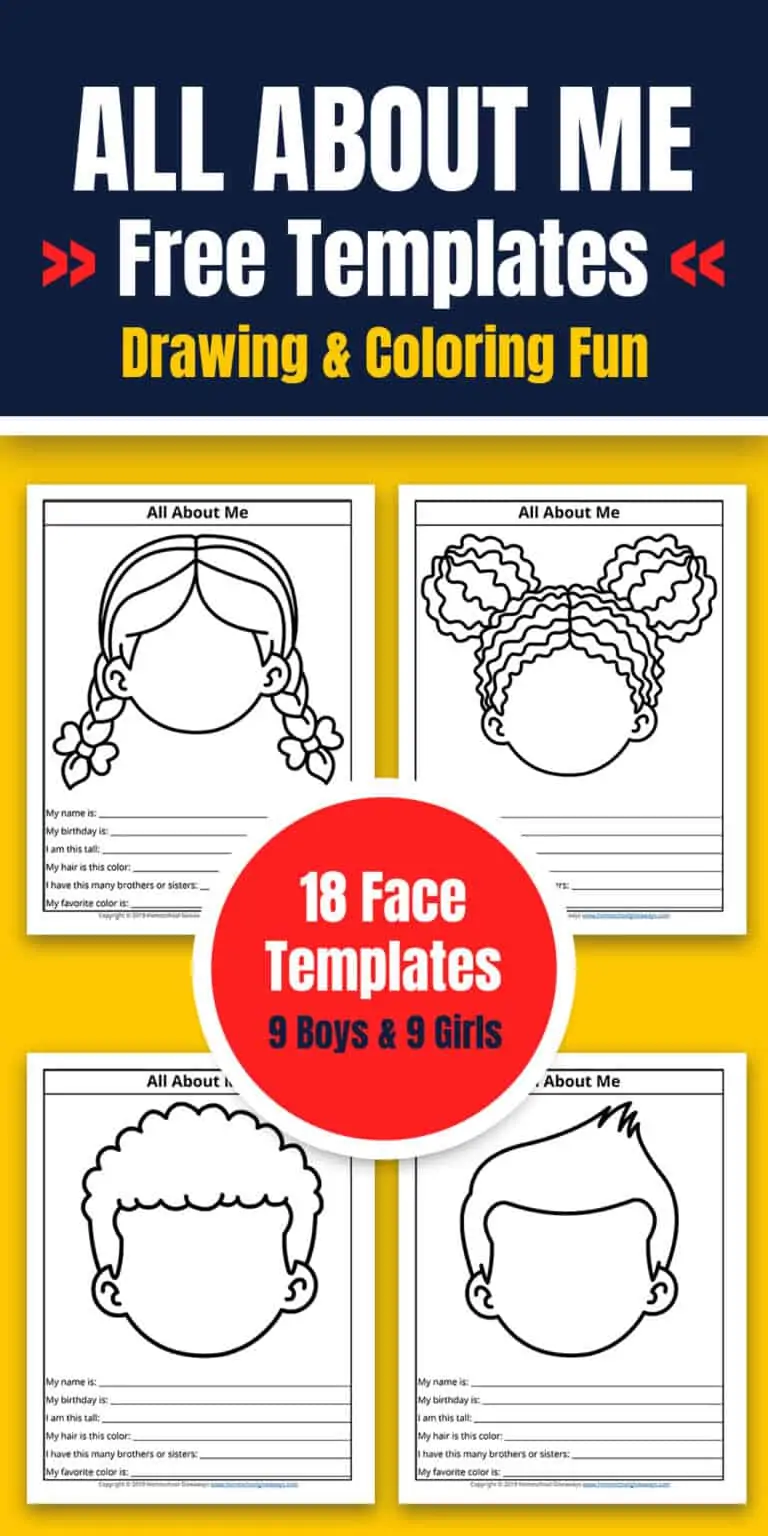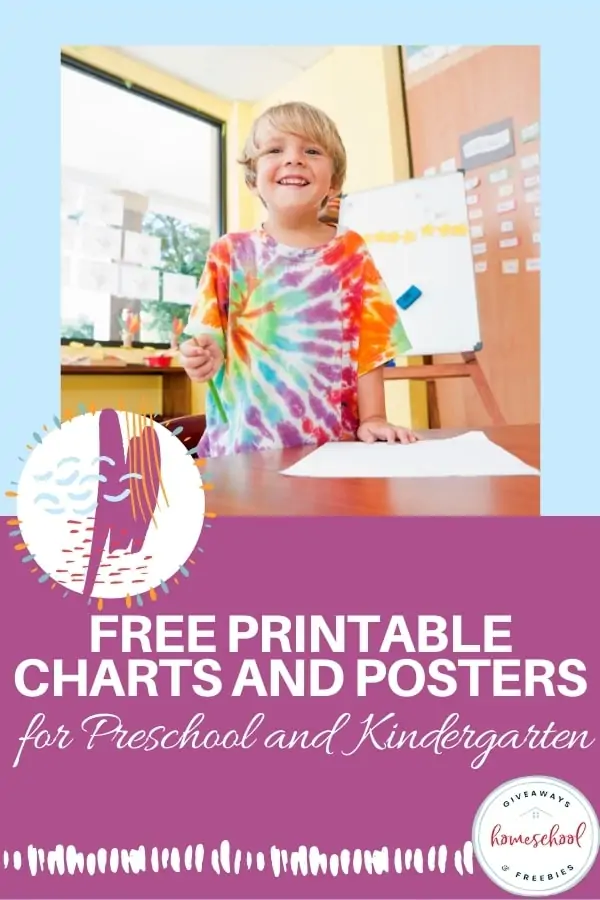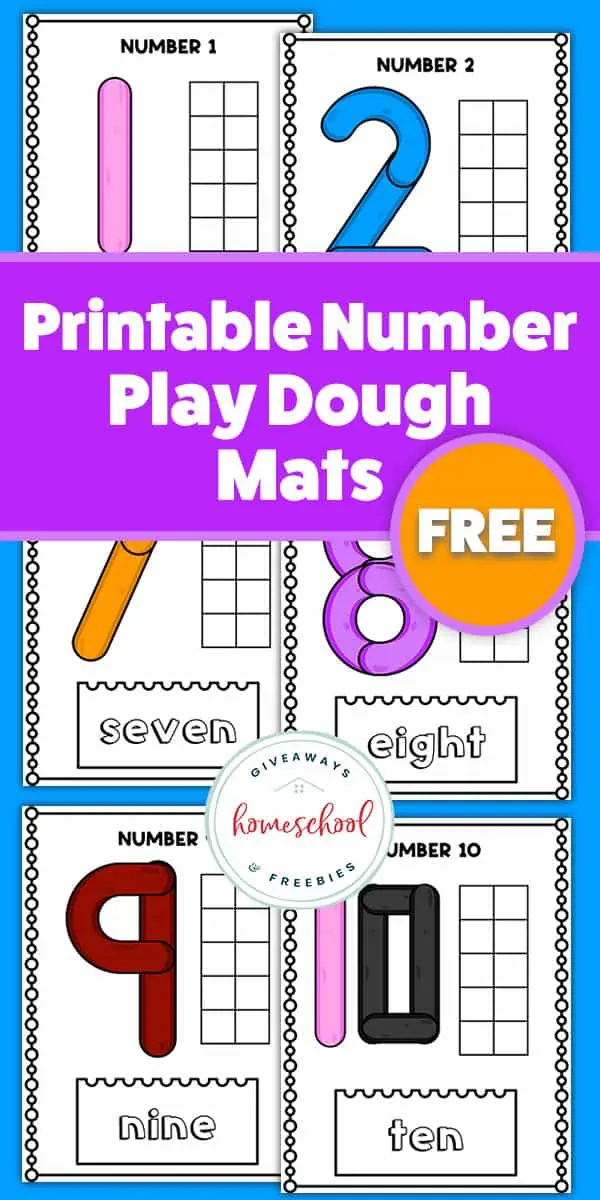The Best Tips for Teaching Preschool at Home
Published:
November 10, 2022

Contributor:
Sonlight
Disclosure: This post may contain affiliate links, meaning if you decide to make a purchase via my links, I may earn a commission at no additional cost to you. See my disclosure for more info.
Are you thinking about teaching preschool at home? You really can do it and this post will give you all the details you’ll need to know.
Teaching Preschool at Home
Teaching preschool at home can be a rewarding experience. After all, you know your child better than anyone else does. And you love them fiercely. But you may still be apprehensive about teaching your preschoolers all the right things at the right developmental time. That is understandable! Here are then most important things you need to know about teaching preschool at home.
Getting Ready to Homeschool Preschool
When you’re getting ready to homeschool preschool, there are many kinds of activities you can do. But it’s a great idea to follow your child’s interests when finding a learning experience to engage them.
You want a fun way to spend quality time with your preschooler while also teaching them the foundational building blocks they’ll need in kindergarten and beyond. Don’t overplan or over stress about homeschool preschool! Keep it simple and enjoy the time with your child.
Steps to Begin Teaching Preschool at Home
The steps to begin teaching preschool at home include figuring out what you need to teach, developing a routine, deciding where you’ll do it, and if you need to purchase any preschool supplies.
This post will give you all that information, so be sure to scroll all the way to the bottom for a great list of what your preschooler needs to know before kindergarten. This will give you a plan for what you will want to teach in preschool homeschool.
Then, you can simply use your kitchen table and your couch to do specific activities. You don’t need a dedicated schoolroom unless you want one!
You might need some preschool supplies or educational toys, but most of what you’ll absolutely need you likely have on hand – things like picture books, manipulatives, playdough, and sensory bins.
Of course, your local library will be your friend while you’re gaining piles of great books.
How should I structure my day for home preschool?
When you’re teaching preschool at home, you’ll want to think about how you’ll structure your day. Of course, every situation is different, and you may have teenagers, toddlers, or babies thrown in the mix – or all of the above!
So the key components to structuring your day for home preschool is to realize that it will not take long at all. That is, you don’t need to directly teach your preschooler much more than 30 minutes each day.
What’s the rest of the day?
It’s for free play, sensory bins, imaginative play, outdoor play, and more! Young children can join older siblings in read-alouds or they can use playdough at the table while you’re homeschooling the older kids.
In the early years if your oldest is your preschooler, you can give them 30 minutes of direct instruction and then spend the rest of the day focusing on real life learning situations, which we’ll discuss below.
The most important thing to remember is to make a daily routine to keep yourself on track. But of course, that daily routine needs to be flexible because some days just don’t go as planned! You’ll love these 5 principles for a peaceful preschool at home to help you structure your day.
Routines
Kids thrive on routines and it’s a good thing for everyone if you know what to expect each day. If you’ve ever seen an official preschool program, you’ll know that they have regular daily routines and rhythms.
Even though you’re teaching preschool at home, routines are still an important part of your planning. Children feel more secure when they know what to expect, plus a great routine will help you stay more organized.
As long as you have a few components to your preschool plan, you’ll just want an anchor to start your day. Maybe you’ll begin with a familiar song together or start by reading a picture book on the couch? Circle time might be the easiest way to begin your preschool routine and you can talk about the weather and the day of the week. Just come up with a gentle and flexible flow.
Preschool at Home Schedule
A preschool at home schedule shouldn’t be daunting. And it should be able to fit around your life, whether you’re homeschooling older kids or nursing babies or both! A daily schedule in the preschool years may not be necessary, but a general flow or routine might be helpful.
So what could a preschool at home schedule look like?
You could have a couple components like circle time, independent play, outdoor time, couch or reading time, and rest time. Of course, you could be more elaborate than this if you really want to, but it’s not necessary!
Circle time can be the start of your preschool day where you talk about the weather, the day of the week, and the seasons.
Independent play and outdoor time are important for your children and you! Of course, couch or reading time is an important time to read them loads of books and connect and bond with your child. They’ll likely still need a rest time or a quiet time. You could also add in things like music, crafts, nature study, and sensory bins.
Focus on Real Life Learning Experiences
Much of the learning in preschool is focused on “pre-skills” or those foundational skills that your child will need for future academic success. And the good news for busy moms is that much of this groundwork can be laid if you focus on real life learning experiences.
That is, most of the play and reading and talking with your preschooler is what will set them up for success in the future.
Communicate with Your Preschooler
So while you’re going about your day, don’t neglect to talk to your preschooler about what you’re doing or what’s happening around them. Take them to places around town and describe the way a community functions and how community helpers contribute.
Sing songs and read nursery rhymes with your child as part of a bedtime routine. All of these are examples of real life learning experiences that will help your child grow.
Don’t forget to include field trips in your preschool plan. Following your child’s interests can give you great ideas for activities and experiences that they would enjoy.
Teach Your Preschooler Life Skills
Your preschool child can learn life skills in the early years. While teaching lifeskills may sound like it’s meant for older kids, there are plenty of life skills that a preschool student can learn. Things such as:
- hygiene
- healthy habits
- simple chores
- learning emergency numbers
- learning contact information
- financial literacy
- self-control
These are just a few of the basic and foundational life skills that you can begin to teach your preschooler.
Learn Through Play
Kids learn best through play! While adults may feel like play is wasted time, it is important for their emotional regulation and also their imagination and processing of information. Preschool-aged children need lots of playtime and they do best with hands-on learning.
Hands-On Learning Activities
There are hands-on activities that will help your preschoolers learn and grow. Here are just a few.
Manipulatives
Manipulatives refer to any small object that children can grasp, move, and manipulate as part of their learning. Your child’s fine motor skills will be strengthened with frequent use of manipulatives as your child needs to use his smaller muscle groups in his hand and fingers.
There are many different activities you can do with manipulatives such as sorting, making patterns, grouping by color, and counting. You can even use math counters worksheets as a form of manipulatives.
There is an enormous amount of different materials that you can use as manipulatives, and many of them are simple household items. If you have a pile of pennies, buttons, stickers, erasers, small toys, cars, lego, magnetic letters, pom poms, cheerios, or gummy bears, then you have manipulatives!
Playdough
Using play dough in your preschool is the best way to improve fine motor skills. Kids love the tactile and squishy nature of playdough. Kids love using free printable play dough mats as a form of learning. And many kids will play for hours!
It’s not wasted time – they are working their smaller muscles and maturing their fine motor abilities while they have this sensory play with playdough.
Sensory Bins
Little kids love sensory bins! Adding a few seasonal or themed bins to your preschool is one of the easiest ways to keep your kids engaged while also giving them yet another outlet for building those fine motor skills.
While your kids pinch small items in the sensory bin, their muscles are getting a workout in their hands and fingers. All of these muscles need to grow stronger before your child will be able to successfully wield a pencil and write in a few years.
Preschool Academics
Preschool academics don’t need to be complicated! You’ll just want to cover the basics with your child. And the very best way to cover academics with your preschooler is to use hands-on learning and lots of picture books!
Using Literature to Teach Preschool
Using literature to teach preschool is one of the best ways to grow your child’s literacy skills. There are dozens of benefits of reading to your child, including parent-child bonding, letter recognition, aural skills, attention span, and increased vocabulary. In fact, using great picture books is a simple way to teach preschool at home without the hassle of using a complicated preschool curriculum.
There are many living books for preschoolers that will help you use literature to teach preschool. By reading the best books to your young child, you will be setting them up for future academic success.
Before kindergarten, your preschooler should be able to
- name the letters of the alphabet in order
- write their first name
- sort various objects
- name shapes
- make and identify patterns
- count to 20
- identify numbers 1-10
- use pencils and crayons properly
- listen and follow instructions
- follow simple rules
- hold scissors correctly
- sit and listen to a book being read
- summarize events from a story
- take turns with others
- communicate their feelings and emotions
In Conclusion
The good news is that teaching preschool at home can be filled with lots of fun activities and memory-making! And don’t forget that your most important task is to create an environment where a lifelong love of learning can flourish.

